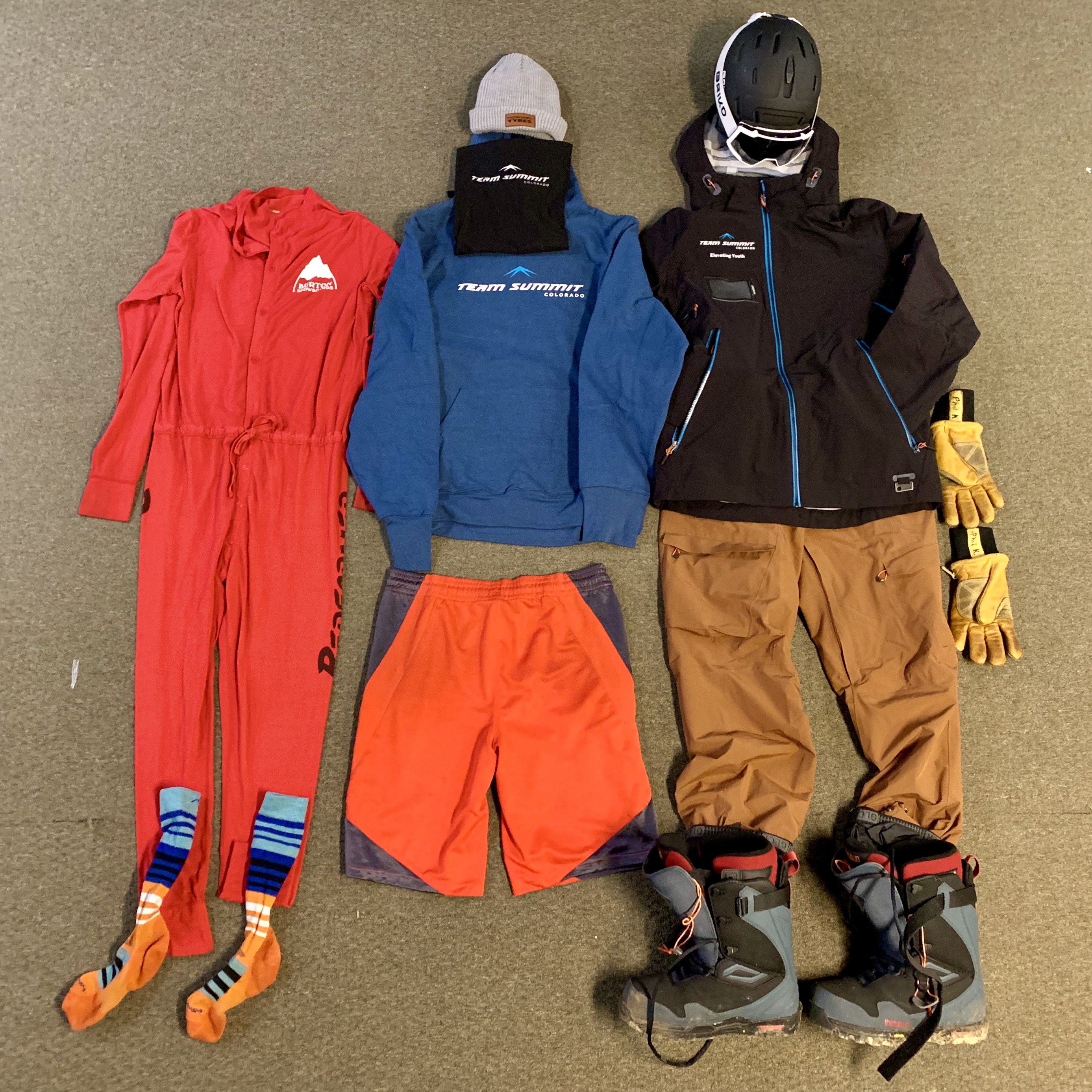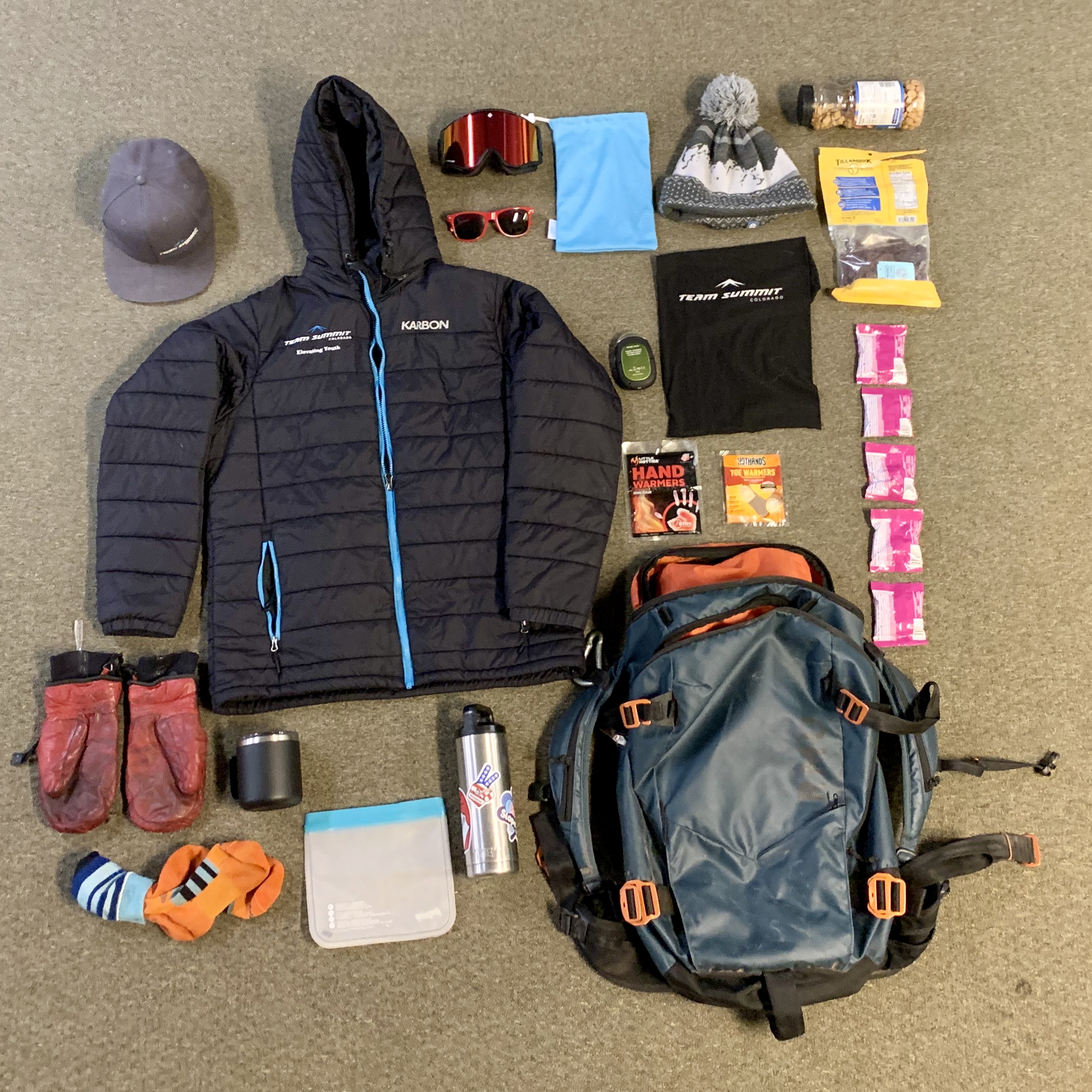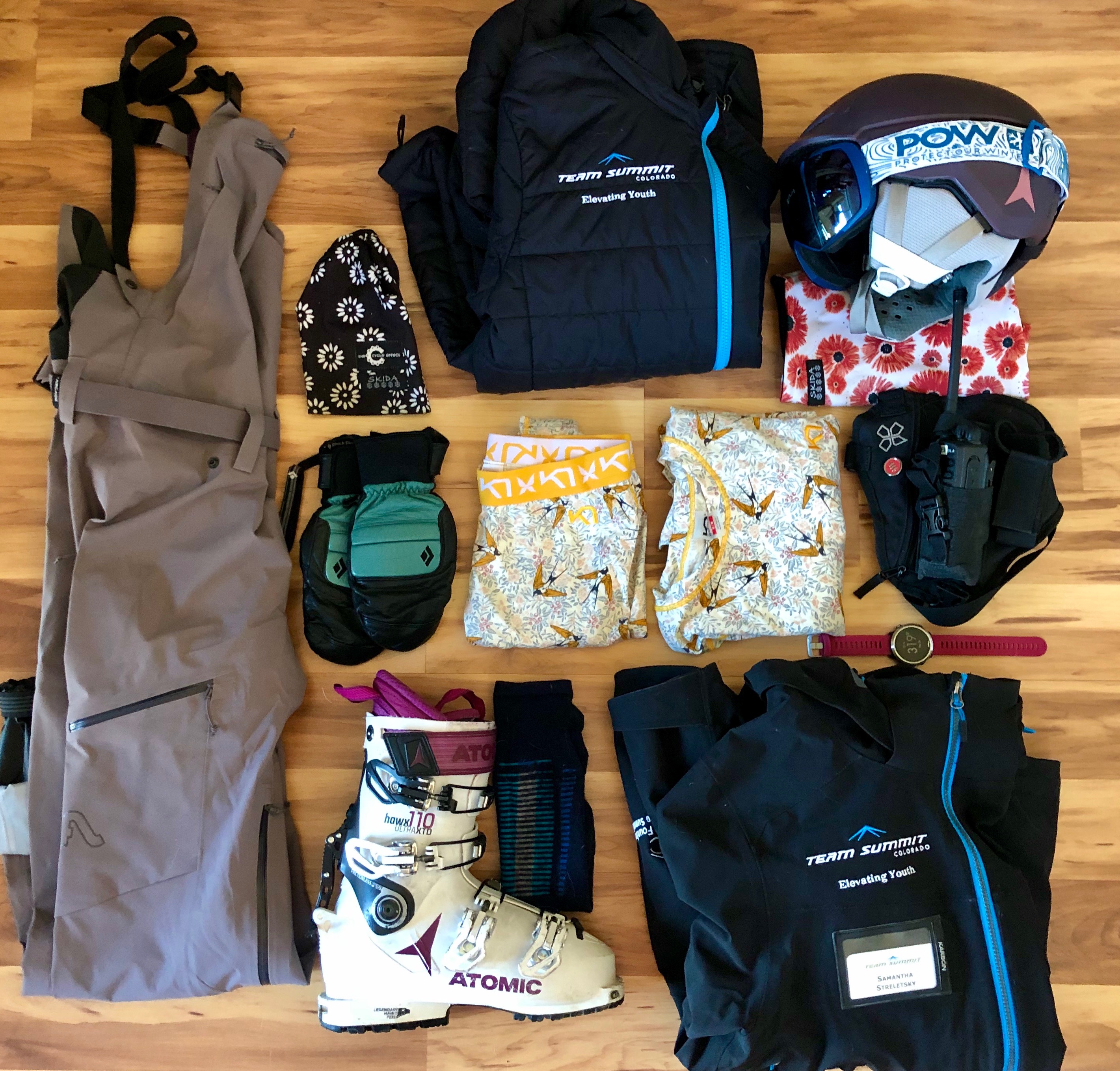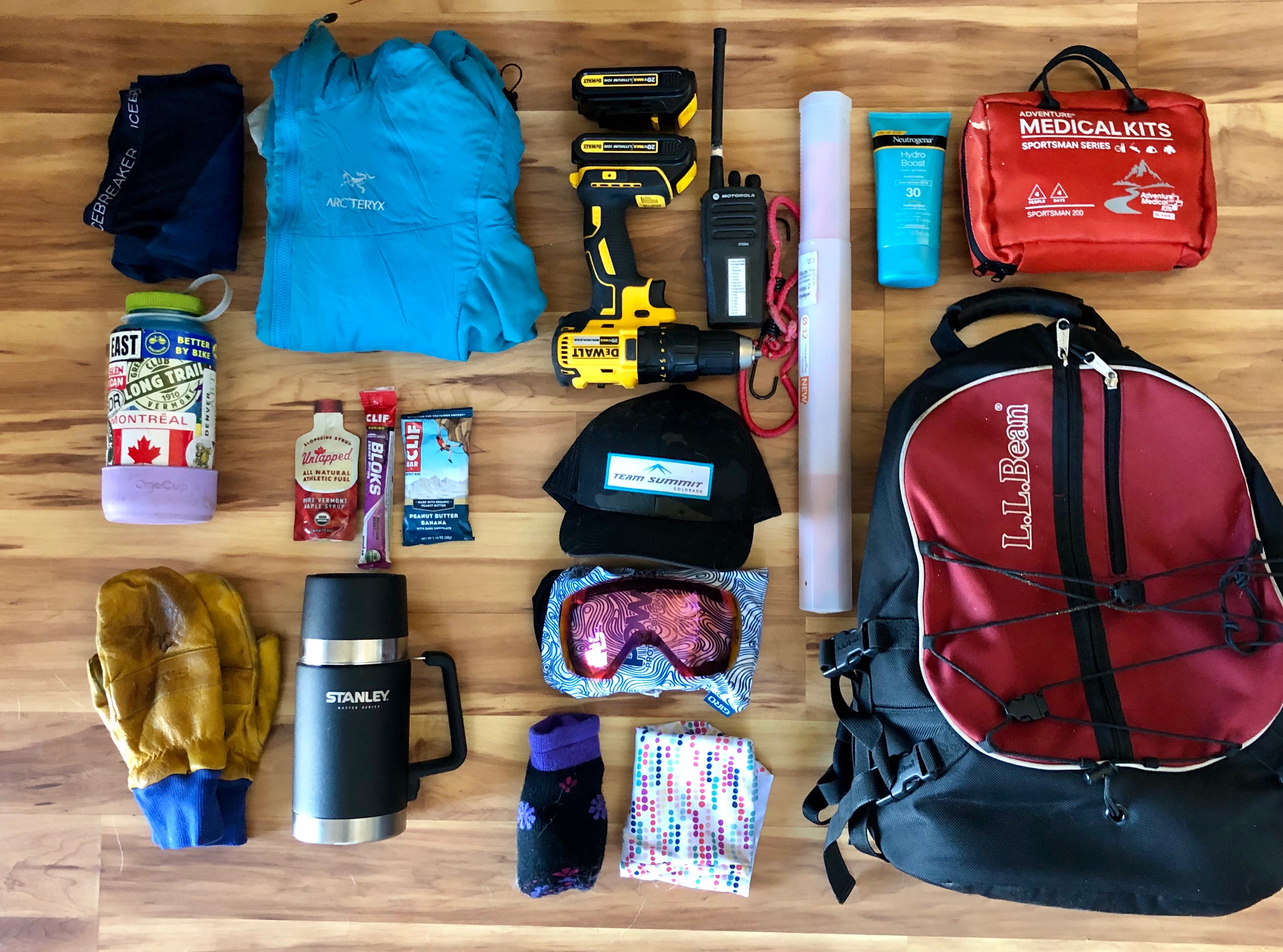How to Stay Warm in Winter
Tips for Keeping your Athlete Warm and Comfortable this Winter
*Or how not to hide from the cold, and embrace winter in its entirety*
Team Summit has been around for over 50 years. In that time, we have learned more than a few different ways to stay comfortable out on the hill. We would like to recommend 12+ ways to stay warm and comfortable over this winter; plus a few bonus tips.
1. Pack the Basics
What you put in your pack and how you use these items makes a world of difference on any given day. Team Summit has a general checklist to help you stay warm and comfortable regardless of the weather found [here]. This list includes the basics such as food, dry layers, goggle lenses, water, etc.
Each person is different and has their own preferences based on their body type and gear. The important piece is to have spares in a pack that you can leave at the base or mid-station.
You can always put smaller items such as snacks, hand warmers, spare facemasks, or spare gloves in your jacket to ensure they are always accessible.
2. Layering
Learning to layer appropriately is an art form with countless articles to keep you warm and comfortable in varied conditions. But here are the basics:
Base Layer: something to wick moisture away from your body and let it evaporate.
Mid Layer: This is what will keep you warm. We recommend a fleece, hoodie, puffy or sometimes just a thick shirt.
Outer Layer: While an insulated outer layer is extremely nice, the ultimate goal of any outer layer is to prevent the elements. This means water and wind-resistant. If you feel the wind or get wet, you are not going to be a happy camper.
*The jackets we provide offer 100wt insulation with 15k waterproofing and breathability. Your Team Jacket is the preferred outer layer.
The Washington Post has a surprisingly great article about which materials to use and when: https://www.washingtonpost.com/weather/2018/11/21/how-dress-stay-warm-when-its-super-cold/
3. Insulation
Insulation is another topic with too many articles and recommendations to count. The short and sweet of it all is: Puffy and appropriately loose is better.
Insulation works by trapping warm air thereby providing a protective warm layer between your body and the elements. Even the best-insulated jacket can be rendered useless when you compress those airspaces by wearing something too tight.
4. Your Pack
Team Summit Colorado exists in a High Alpine environment. Meaning the weather can change drastically. Pack your bag with not only the items you will take out, such as snacks and spare lenses but also with extra layers. Your backpack should include both hip and chest straps to ensure it stays tight to your body as you are skiing and riding
5. One Pair of Appropriate Socks.
We recommend finding one pair of socks that you like and purchase multiple of the same sock. This can help with matching socks and having the boot fit the same every day.
Choose one pair that fits well and is appropriate for the conditions. If a pair is too thin for a subzero day, then purchase a more appropriate pair. Note, we said “appropriate”, and didn't say thicker. Some socks are better at insulating than others without being “thicker.”
Also, socks are meant to fit over your feet, not other socks. When you wear multiple socks, you actually restrict blood flow resulting in cold feet. Heated socks are always a great option.
6. Cotton is Killer
The last clothing-related tip we will touch on is anything Cotton. Cotton absorbs moisture incredibly well, but it will hold onto that moisture. If you use cotton socks, you will feel like you are walking through a swamp until you make it to the chairlift. Once you’re on the chair, that moisture will freeze and you will be left with ice blocks on your feet. Neither one of those situations are fun, so avoid cotton at all costs.
7. Plan for the Correct Conditions
It’s a simple concept, but most people forget to check the weather before they head out. Pack a puffy in your pack instead of a hoodie if you think it’s going to be cold. Put a spare pair of dry gloves or another neck gaiter in your jacket or pack if it’s going to be slushy or snowing.
If you made it up to Summit County and forgot to pack an item or two, you can always purchase gear from our Team Store, Podium Sports, or A Racer’s Edge.
8. Ask your Coach About Gear
Your coach has been both working and playing in the winter environment and is an amazing resource for you; use them.
It takes time, experience, and asking questions to get the right gear and use it in the right way. You can speed that process up by talking about this with others.
9. Stay Hydrated
Everyone knows staying hydrated is a good idea when exercising. Did you know proper hydration assists blood flow? Proper blood flow assists in keeping your body warm. Thus hydrating frequently will help you keep a warm body and extremities.
10. Blood Flow
Your extremities, fingers, and toes, are able to stay warm by having effective blood flow. Warmth from your core is carried through your blood to your extremities. This is why it is so important to ensure you are hydrated or have appropriate layers protecting your core. Jumping jacks, push-ups or running in place are great ways to quickly increase blood flow and raise your temperature, but it does waste energy. Snacks are also essential, but more on that later.
11. Frequent Bathroom Breaks
Going to the bathroom frequently means a quick reprieve from the cold and prevents your body from spending energy to keep your bladder warm.
12. Don’t Have a Big Lunch. Snack Instead.
A big lunch requires a lot of energy to process that whole meal. That is energy that could be used to keep you warm on a colder day. Keep snacks in your jacket and use them frequently to keep your energy up and your body generating heat.
A hearty soup for lunch is both warming and just filling enough to keep you on your game.
General Tips from Our staff
- Toe warmers are designed to be placed on top of your socks in your boot and never on your body or any place with lots of airflow; they can overheat, causing damage to your gear or body.
- Refill your thermos with warm water regularly to keep you warm and hydrated.
- Ensure your layers fit over each other to provide adequate insulation.
- Put your hand warmers in the designated “hand-warming pocket” in your gloves.
- Glove liners work to create an insulating layer between your hands and your gloves.
- Open your vents while hiking, but close them just before you stop to trap the heat.
- A quality thermos to hold warm water for hydration goes a lot farther than a Nalgene.
- Purchasing hand warmers in bulk or even electric hand warmers is cheaper than buying them at the gas station.
- Boot dryers are our team’s best friend.
- Keeping your goggles over your eyes when outside not only makes you look cool but also provides warmth and protection from the elements.
- Fleece facemasks are hard to breathe through. Purchase a thinner face mask and tuck your chin into the collar of your jacket when your face gets cold.
Pro-Tips
Landon - Freeski Devo Head Coach
For this year I just bought heated socks by Hotronics from A Racer’s Edge. They also have battery packs with a wire to put a heated footbed in your boot. All these options can seem pricey, but they are absolutely worth every penny.
Oh, And keeping your kidney’s warm (your lower back). Put a hand warmer against your lower back, that tends to warm your core up faster.
Rodney - Director of Development
Make sure your equipment is properly dry before heading to the mountain. That means to bring your equipment inside and make sure it is dry and ready for the next day.
Even when we are all tired and just want to go to bed, I still say ‘Go get your stuff from the car.”
Nicholas - Ski Patroller
Having the layer options! Have an “emergency” kit of hand warmers or spares on your person instead of your pack so they stay warm.
Phil K - Events Manager
I let my electric hand warmers rest on the inside the cuffs of my jacket [against my wrist]. This way it heats the blood going in both directions keeping my fingers and arms warm.
|
|
|
|
[What Phil K wears for competitions] |
[Phil K’s Pack] |
Samantha - Alpine Devo Head Coach
|
|
|
|
[What Samantha wears for training on hill] |
[Samantha’s Pack] |
Additional resources:
https://www.outsideonline.com/2417283/11-ways-stay-stay-warm-winter#close
https://www.outdoorproject.com/gear/how-layer-skiing-snowboarding
https://www.washingtonpost.com/weather/2018/11/21/how-dress-stay-warm-when-its-super-cold/






